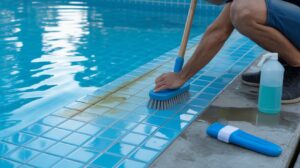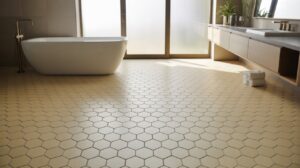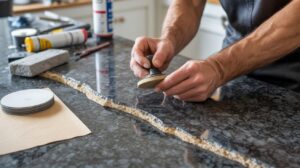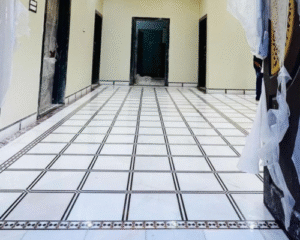Concrete floor repair is one of the most important steps in keeping your space safe, functional, and visually appealing. At SF Marble and Granite Inc., we understand that even the toughest concrete floors can develop issues over time. Cracks, chips, holes, and uneven surfaces are not just cosmetic problems; they can create safety hazards, weaken the structure, and shorten the lifespan of your flooring.
By addressing these issues early, you protect your investment while restoring strength and durability. A properly repaired floor not only improves safety but also enhances the overall appearance of your home or business. Whether it’s a small crack in your basement or a large surface issue in a commercial property, timely repairs ensure your concrete floor stays reliable for years to come.
Table of Contents
ToggleCauses of Concrete Floor Damage
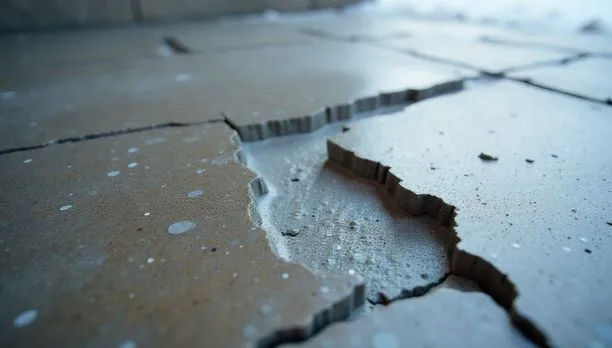
Concrete floors may look solid, but over time, they can develop issues that require concrete floor repair. At SF Marble and Granite, we often find that most damage comes from natural wear, environmental factors, or poor installation. Knowing the root causes helps in planning the right concrete repairs for long-term durability.
Main Reasons for Concrete Damage
- Natural settling of the foundation – Shifting soil beneath a building often leads to cracks.
- Heavy loads and traffic – Continuous pressure from vehicles or machinery weakens concrete floors.
- Moisture and water seepage – Water intrusion breaks down the structure and accelerates cracking.
- Freeze-thaw cycles – Expansion of frozen water inside cracks worsens surface damage.
- Poor installation or materials – Weak mixes and improper curing reduce lifespan.
Concrete floors remain strong when properly installed, but unlike natural stones, such as heat-resistant marble or when using marble on concrete, they require ongoing care. Addressing these causes early ensures a safer surface and prevents the need for expensive replacements later.
Signs Your Concrete Floor Needs Repair
A solid concrete floor should remain smooth and durable for years, but when damage appears, timely concrete floor repair becomes necessary. At first, the signs may look small, but ignoring them can lead to larger problems that require costly fixes. Understanding these warning signs helps you take quick action with the right floor concrete repair solutions.
Common Warning Signs
- Visible cracks or spalling – Small surface cracks can grow over time, while spalling causes flaking or chipping.
- Uneven or sinking areas – Settlement beneath the floor often leads to sections that dip or rise.
- Holes and potholes – High-traffic zones or poor material quality can create deep surface damage.
- Water pooling or moisture intrusion – Standing water signals weak spots that can break down the concrete further.
- Dusting or surface wear – A powdery surface often indicates the top layer of concrete is deteriorating.
When you notice these issues, it’s important to act quickly. In some cases, sealing with epoxy can restore strength, while in outdoor spaces, using durable concrete pavers may be a better solution. Regular inspections and timely concrete repairs not only extend the life of your floor but also improve safety and appearance.
DIY vs. Professional Concrete Floor Repair
Choosing between DIY and professional concrete floor repair depends on how serious the damage is. Small cracks or light touch-ups can usually be handled at home, while structural problems need expert care.
DIY Repairs
- Small cracks or chips
- Surface touch-ups with epoxy
- Cosmetic overlays like faux marble finishes
Professional Repairs
- Deep structural cracks
- Sinking or uneven slabs
- Wide gaps or preparing concrete for travertine installation
Minor fixes are fine for DIY, but larger issues call for professional concrete repair to ensure durability and safety.
Step-by-Step Concrete Floor Repair Process
Successful concrete floor repair is more than patching cracks; it’s about restoring strength and a clean finish. Whether preparing for bedroom flooring or supporting heavy areas like quartz countertops, the right process makes all the difference.
Repair Steps
- Inspection and Assessment – Identify cracks, holes, and uneven spots.
- Surface Preparation – Clean and clear the area for better bonding.
- Choosing the Right Method – Seal small cracks, patch holes, level floors, or resurface large areas.
- Application of Materials – Use the right compounds and bonding agents.
- Curing and Drying – Allow time for proper hardening.
- Finishing and Polishing – Smooth, seal, or polish for durability.
By following these steps, concrete floor repair ensures a durable surface that looks clean and stays strong for years.
Why Choose SF Marble and Granite?
When it comes to concrete floor repair, experience and skill matter. At SF Marble and Granite, we combine years of expertise with quality materials to deliver results that last. Our team understands that every project is different, whether it’s restoring a worn concrete surface or preparing a base for marble floor installation.
We don’t just repair; we make sure your floors are safe, durable, and visually appealing. With professional techniques, attention to detail, and customer-focused service, SF Marble and Granite is the trusted choice for homeowners and businesses looking for reliable concrete floor repair solutions.
Final Thought
Timely concrete floor repair is essential to maintain safety, durability, and appearance. Ignoring small cracks or surface issues often leads to bigger, costlier problems later. With the right method and professional care, your floors can last for years without losing strength or style.
At SF Marble and Granite, we’re here to help you protect your investment with expert repair and long-lasting results. Don’t wait until minor damage becomes a major issue. Contact us today for reliable concrete floor repair and keep your floors looking their best.
FAQs
How long does backsplash installation take in Dracut, MA?
Most backsplash installations are completed within 1–2 days, depending on the material and design.
Can you install a backsplash over existing tiles?
Yes, in many cases, backsplash installation can be done over existing tiles if the surface is stable and smooth.
What backsplash materials work best for kitchens and bathrooms?
Popular options include ceramic, porcelain, glass, marble, and granite, chosen based on durability and style.

